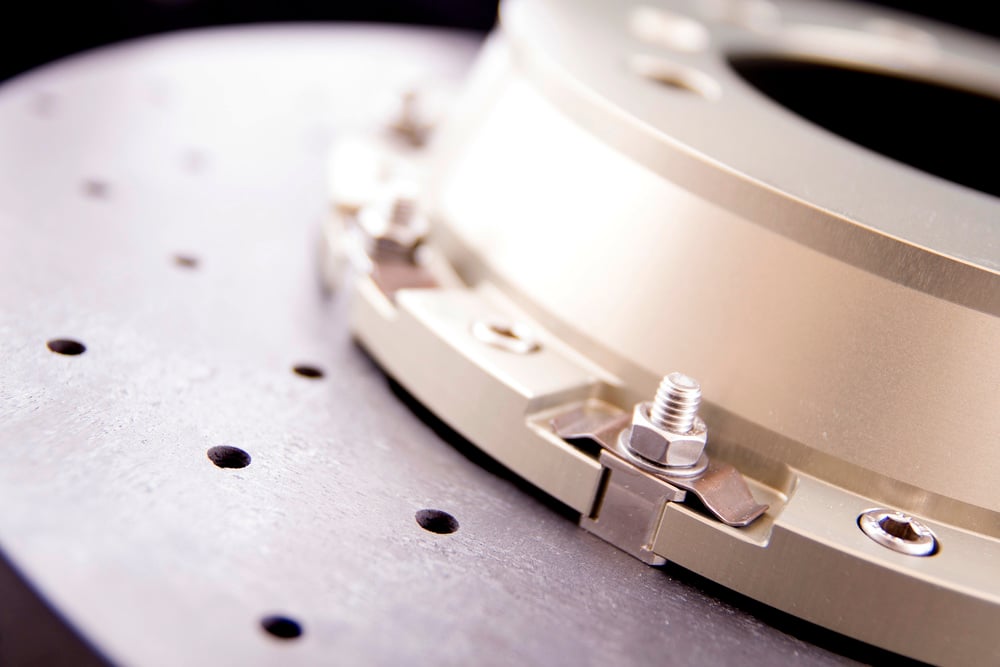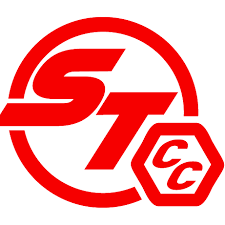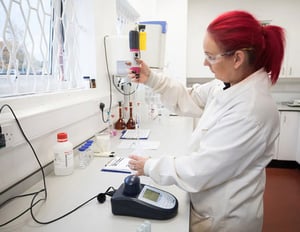Surface Transforms plc (LON:SCE), manufacturers of carbon fibre reinforced ceramic automotive brake discs, has announced its audited results for the twelve months ended 31 December 2023.
Financial highlights
· Revenues grew 81% to £7.3m (2022 restated £4.0m), following change to revenue recognition criteria
· Gross margin 57% (2022 Restated: 64%), reduction due to higher temporary outsourcing
· Net research costs of £9.7m (2022: £5.6m)
· £9.2m non-cash impairment of tangible assets (£3.0m) and Intangible assets (£6.2m)
· Loss after taxation, including £9.2m impairment, was £19.6m (2022 Restated: £5.3m)
· Loss per share of 7.92p (2022 Restated: 2.58p)
· Cash used in operating activities £10.3m (2022: £6.5m)
· Cash at 31 December 2023 of £6.1m (2022: £14.9m)
· £10.1m equity placing and open offer to support ongoing working capital needs in the year and £8.8m net of fees further equity raised post balance sheet
· £13.2m loan secured to fund future capital investment
Customer highlights
· Increased order book by £100m (lifetime value) to £390m at the end of the year
· Further demonstrated the ability to win “carry over” business with existing customer OEM 10
· 5 contracts in multi-year revenue generation phase
· Customers have been critical but supportive in response to our production difficulties
Operational highlights
· Continuing operational problems restricted sales throughout the year albeit quarter- on – quarter growth in output
· Resultant extensive program of technical, personnel and process changes in the year to reduce equipment down time and scrap rates
· Capital investments of £9.1m (2022: £8.4m) in the year
· Capacity constraints progressively reduced
· Focus now on improving process capability of all operations
Senior Management Changes
· Post balance sheet, in April 2024, David Bundred announced his intention to retire as Chairman
· Isabelle Maddock joined the board as CFO on 4 September 2023
· Stephen Easton appointed COO on 4 September 2023
· Michael Cunningham resigned from the Board as CFO on 31 May 2023
Other
· Awarded London Stock Exchange “Green Economy Mark” in the year
Posting of Annual Report and Notice of Annual General Meeting:
The Company’s Annual Report and Accounts for the year ended 31 December 2023, together with a notice convening the Company’s Annual General Meeting (“AGM”) will be posted to shareholders today and will be available on the Company’s website www.surfacetransforms.com.
The AGM will be held at 1 Paternoster Square, London, EC4M 7DX on 23 July 2024 at 11.00 a.m.
Chairman’s Statement
After many years of product development, leading to our £390m order book, 2023 was dominated by the challenge of converting that hard won order book into consistent volume production. Progress was made, sales have grown in each quarter, we were awarded a significant carry over contract in the year, but the overall operational progress simply was not good enough.
As a result, the Company had to seek fresh equity funding both in 2023 and in May 2024, and in parallel negotiated a £13.2m loan ringfenced for capital expenditure. The pricing of the funding and resultant market capitalisation has impacted the annual review of asset valuation and led to a subsequent, non-cash, asset impairment. The Board obviously regrets the circumstances that have led to these distressed equity raisings and completely understands the frustration and anger of shareholders over the subsequent dilution. The Board believes the combination of these equity fundraisings and local authority loan is sufficient for working capital and capital expenditure needs.
Sales Progress
The Company is growing; 81% year on year revenue growth. The central issue in 2023 was that there was sufficient demand for twice the level of the H2 output; we had originally forecast that we would satisfy this demand, but production issues meant we could not.
Progress on Operations
Surface Transforms is not sales constrained. The inability to achieve production targets, a recurring theme of 2023, has therefore been a continuing key frustration. We are in a learning curve, involving numerous interrelated but separate technical problems. That learning curve has proved to be both steeper and longer than we expected.
There were three broad reasons for these continuing 2023 problems, the delays in installing notional capacity, the inability to achieve the target output from this notional capacity and the personnel learning curve.
· New capacity installation delays: the Company entered 2023 without adequate capacity to meet demand and spent the year closing the capacity gap with £5.8m of fixed asset capital expenditure in the year.
The background is well known to shareholders. We ordered our Phase 1 £20m p.a. sales capacity in 2020, and phase 2 (£50m p.a.) in 2021. For both phases, we believed that 2 years was sufficient lead time for both the suppliers and the Company. Additionally, we assumed, that the projected demand for 2023 would not exceed £20m.
In the event the plant has taken 3 years, not 2, to build and commission, and the speed of our commercial success exceeded our most optimistic assumptions. The subsequent lack of capacity impacts the Company in two ways. Firstly, we had underlying demand for £30m sales in 2023, that we could not satisfy, requiring careful customer management. However, the immediate 2023 problem was that without the headroom of spare capacity, a single point of failure (down time or scrap) on a single machine became a total factory bottleneck.
The Phase 2 £50m sales capacity was progressively installed during the year and into 2024. With one exception, the £50m notional capacity has been achieved in the first half of 2024, albeit with work required on process capability to achieve all the notional capacity. The outstanding item from this £50m programme is one furnace that is now expected to be installed at the end of the year.
However the growth in demand continues and the installed capacity increase will soon be thereafter be overtaken by the next step change in demand, requiring the next part of the phase 2 capacity increase to £75m. This increase to £75m sales is planned for commissioning in H2 2025, with equipment being ordered in 2024. That task is underway and is in line with plan.
In summary we had planned to take 2 years to install our £50m capacity but will have taken over 3 years. The 2024 capacity task is therefore twofold; completing this phase to £50m p.a capacity increase whilst, at the same time, ordering the plant for our £75m p.a sales factory, thus competing Phase 2. We expect to have balanced short-term demand and capacity by the end of 2024 and will maintain this resilience thereafter.
· Process capability, and scrap: the issue of lack of capacity was compounded by the inability, in some sub processes to achieve the planned output from this notional capacity. As the Company scaled production, technical (and some tooling) issues emerged with the capital equipment that were not apparent during the development phase resulting in excessive down time and scrap. Running furnaces 24/7 is a different challenge to running them occasionally producing prototype volumes.
The central problem was excessive variability in some production processes – known as process capability. The effect was high levels of rejected product scrap. Improving process capability is a well-known technique in volume manufacture, requiring detailed analysis of input and output variables. This programme started in the year with, reduced scrap results already seen in 2024.
· New personnel and procedures: we always knew that setting up a volume production site required new skills and operational procedures not previously needed in a prototype factory. Not everybody in our original team, at all levels, was able to transition from prototype to volume production.
To this end the Company made two significant senior management appointments in Q3 2023, with Isabelle Maddock joining us as Chief Financial Officer and Stephen Easton as Chief Operating Officer. In turn, both Isabelle and Stephen have subsequently made further appointments in their own departments. In particular, over the last few months, operations have been significantly re-organised, at all levels, involving both new and existing personnel, with, for example a fundamentally different approach to the type of furnace technicians and maintenance personnel we needed.
We have also instigated a step change in internal training, ranging from CNC programming for operators to a Manchester University executive degree programme for managers. We have always been proud of being a “learning” company, (27% of our workforce are graduate level) but nonetheless have now stepped up a gear in that area.
In parallel, the Company has undertaken a deep review of the organisational procedures of operational planning, maintenance, quality, and supplier development. Unsurprisingly all show the potential for significant improvement with work on these projects, under the new leadership, now well advanced.
Progress with customers
Given the operational background the key commercial task in 2023 was to ensure that we kept customers fully informed, including realistic expectations of what they could expect. The customer’s response has been what we would have hoped; they have reiterated that they want to buy our product and expect us to fix our operational problems. They have been, rightly, critical but have also offered technical support. We remain in continuous dialogue.
Crucially, the customers continue to support us. Indeed OEM 10 awarded us a carry-over £100m contract in October 2023. We do not take this support for granted and whilst the threat to existing contracts now seems under control, the real proof of our ongoing relationship will be the continuing ability to convert the prospective contract pipeline (“PCP”) into firm orders. Customers will want to see firm operational progress before making future commitments.
Looking beyond 2024 we have contracted demand that enables us to reach up to £75m sales per annum within the next 4 – 5 years. Our PCP is in addition to this and is dominated by carryover business from our existing customers, and the Company’s ambition remains generating revenues of £100m per annum within the next 5 years.
Beyond these major customers, we are continuing to widen our customer base including the very small niche vehicle builders (we describe them as “Near OEMs”) as they provide both a very attractive return on the investment required, offer a degree of flexibility in our operational planning and have only a marginal impact on capacity in a market segment that is growing and larger than we previously believed.
Trading Update and Outlook
The Board’s expectation of 2024 and 2025 financial performance are unchanged from those described in the recent fund raising, albeit now at the lower end of that described range. And as we note in our going concern statement below, at the current time we need to recognise a material uncertainty in our sales forecast. As described in the fundraising circular dated 3 May 2024, the first half of 2024 is expected to be one of consolidation as capacity is installed and the process capability work maintains momentum, with growth accelerating in the second half. Almost all the single point of failure capacity bottlenecks have now been dealt with.
In relation to which, significant progress was made in Q1 on reducing scrap and expanding capacity; this continued into Q2. However, April and May were impacted by operational supply chains caused by our working capital constraints in Q2 (now, since early June, fully resolved by the fund raising). The Company will be reporting the output for H1 FY24 before the Annual General Meeting on 23 July.
To reiterate the comments above, the problematic furnace , the cost of which has been fully impaired has neither had nor is expected to have an impact on overall production output and the team has a longer term solution that avoids the need for this furnace at all.
The Company’s ambition remains generating revenue of £100m sales per year within the next five years.
Summary
The last twelve months have been, arguably, the most difficult in the history of the Company. The operational underperformance was a particular disappointment leading to the need for an unplanned cash injection. As previously stated, the Board obviously regrets the circumstances that have led to this distressed fund raising and completely understands the frustration and anger of shareholders over the subsequent dilution.
However, it is important to remind ourselves that the Company’s long-term sales and profit potential is unchanged. Our product works, is wanted by the marketplace, there is still only one other worldwide competitor, the market is likely to be demand constrained for at least the next 5 years, and we are continuing to install capacity that will, eventually, reach £150m sales. The Board would not be building this capacity without anticipating the detail of how we will fill it.
The central immediate need remains that of resolving the twin problems of installing the capacity and then achieving the output from this notional capacity. Last year we made progress yet there is still much work to be done, further progress has been made in 2024 year to date and that continuing progress will be maintained.
Finally, I want to take the opportunity to thank employees for their valiant work during a tough year and of course to thank all shareholders for their support of our recent equity fundraisings.
Financial Review
Prior Year Re-statement – Revenue Recognition for System Integration Services:
We have reassessed our interpretation of revenue recognition for multi-year service integration contracts under IFRS 15. This has resulted in changes to the criteria upon which revenue is recognised for certain engineering, testing, and tooling services. Previously, revenue had been recognised by a careful assessment of these services over time based on the stage of completion for each contract, using detailed project information. This approach which aimed to reflect a fair representation of revenue earned, aligned with management’s previous interpretation of IFRS 15.
However, since we have been unable to adequately evidence the right to payment for incomplete performance obligations, the criteria for recognising revenue has been revised to only recognise revenue at a point in time being either upon completion of system integration by the OEM or when control is passed over for the contracted services.
Impact of prior year:
Based on this new interpretation management determined there to be a material difference in how the Company has previously recognised revenue. To comply with IAS 8 the Company is retrospectively applying this new interpretation and adjusting prior year audited financial statements. The prior year revenue related to these services amounts to a cumulative decrease of £1.4million, with £1.1m impacting 2022 and £0.3m impacting 2021.
These adjustments have also impacted other financial statement line items, such as cost of sales, contract receivables and contract fulfilment assets, as detailed in Note 30. The Company now expects to recognise more revenue for these services in future periods as system integrations are completed by the OEMs as detailed in Note 3.
Revenue
Revenue increased 81% to £7.3m in 2023, driven by increasing customer in series production contracts.
Revenue expectations fell short notably stemming from the production challenges which took a considerable amount of research and development to overcome, impacting timelines, revenue, overhead costs and cashflow. In response, the Company has made a number of significant technical, personnel and procedural changes improving machinery output, operational planning, maintenance, quality, and supplier development to enable a continuous evolution of the technology for more effective future scaling.
Gross margin
Gross profit margin decreased to 57% due to product mix and process outsourcing which will continue in 2024 whilst some of our larger pieces of equipment are installed and commissioned.
Overheads
Administrative expenses rose 59% to £5.4 million in 2023, compared to £3.4 million in 2022. In addition, £9.2m of impairments and £0.5m of other non- recurring costs are discussed below.
Excluding the impairments and other non-recurring costs, underlying administrative expenses increased by £2.0 million, primarily driven by the addition of 54 new personnel to support series production. The Company was staffed to meet the forecast demand that was not met due to the operational problems. Accordingly future growth, beyond actual achieved 2023 revenues will not result in further proportional overhead increases.
Our commitment to research and development continues to fuel our growth, yet expenditure in the year was unusually high rising, after capitalisation, by £4.0 million to £9.7 million (2022: £5.6m) during the period. The R&D spend was focussed on process development, reflecting the considerable technical spend in the year fixing the manufacturing problems. This spend is reducing as the problems are being resolved.
Looking ahead, R&D expenditure is anticipated to stabilise at a more sustainable level following the significant investments made in 2023. The valuable insights and improvements gained from this past year’s R&D efforts will inform future strategies.
Research will continue to focus on:
• Exploring new techniques to enhance efficiency and product quality
• Optimising production processes
• Identifying ways to utilise better materials, and lower costs
This focus on continuous improvement through process and cost optimisation will remain a core strategy for the future.
Other non-recurring costs
As well as the unusually high incidence of R&D in 2023 management have identified £0.5 million of non- recurring costs that were incurred in the first half of the year due to a temporary lapse in our fixed-price energy contract. The Company has secured fixed energy prices until March 2025, and the practice of fixed-term contracts is expected to continue, management view this as an exceptional item albeit for reporting purposes it is within overhead.
Impairment
At the balance sheet date the Company recognised £9.2m of asset impairment.
As reported in the Chairman’s report we identified that a particular furnace is not performing to contracted specification. We have resolved the issue operationally, using other furnaces and external supply but hold the supplier responsible for the failure. We are pursuing potential contractual and legal remedies yet the outcome remains uncertain. As a result of the furnace’s inoperability, an impairment of £3.0 million has been recognised in the Statement of Comprehensive Income for the year. This figure reduces the value of the asset to the best estimate of its recoverable amount. We have not recorded an asset in relation to any potential legal recovery as we do not currently meet the recognition criteria for a contingent asset under IAS 37.
IAS 36 requires us to assess the recoverable amount of our assets annually and whenever there is an indication of impairment. To apply IAS 36 the Company has necessarily included the recent fundraises as one market assessment indication along with the risk inherent in the company. Management’s discounted cash flow model assumed no expansion capital expenditure or growth beyond current capacity and applied a pre-tax discount rate of 14% based on our determination of our weighted average cost of capital. This initially demonstrated no impairment as the discounted cash flows exceeded the carrying value of assets. In order to address the combined challenges of cash flow forecasting risk in a scale up company and the potential gap between implied market value and carrying value, we have reassessed the carrying value of our assets. The final impairment test applied a pre-tax discount rate of 22% to reflect a further risk premium of 8%. This resulted in a recoverable amount lower than the carrying value, and an impairment charge of £6.2 million, with £5.2 million allocated to capitalised development costs and £1.0 million allocated to software and right-of-use assets.
It’s important to note that the impaired development assets continue to generate revenue aligned with our contracted order book with a lifetime value of £390 million. As a consequence of this impairment, future amortisation expense related to these assets will no longer be amortised on a systematic basis over each contract’s useful life, thus reducing future amortisation expense.
A reconciliation of the above impairments is detailed in Note 4 to the accounting statements.
Exceptional costs
The Company recognised £0.4m of other non- recurring exceptional costs in the year relating to restructuring costs.
Net loss
Net loss in the year (after taxation) after impairments and other non-recurring and exceptional costs was £19.6m (2022 Restated: £5.3m). Expected tax credit similar to previous years due to R&D tax regime. The increase in net loss was driven by significant levels of spend on research and development, production challenges and high defects, growth in workforce in readiness for increased volumes and lower than expected revenues.
Cash Flow
Gross cash at the year end was £6.1m (2022: £14.9m). Supported by £10.1m fundraising to facilitate working capital growth, supplier and customer confidence.
Balance Sheet
Capital investment in the period amounted to £5.8m (2022: £8.4m), with an impairment of £3.0m recognised against a furnace reflecting its best estimated recoverable amount. A further £6.2m impairment charge resulted in a £5.2 million reduction in the carrying value of capitalised development costs and a £1.0 million reduction in software and right-of-use assets. This impairment reflects the results of an impairment test using a pre-tax 22% discount rate.
Revenue grew in the period, leading to a £0.5 million increase in trade and other receivables, a £0.6 million increase in contract fulfilment assets, and a £1.1 million rise in inventory. Contract fulfilment assets are described in note 1 of the notes to the financial statements.
Equity
During the year, Surface Transforms successfully raised £10.1 million in equity funding (net of fees) to support working capital requirements and fulfil orders. Shareholder contributions, including the exercise of 1,120,000 employee share options, totalled £10.5 million net of fees for the year. Despite this after the net loss of £19.6m, net assets decreased by £9.1m.
Loans
In December 2023, the Company secured a £13.2 million loan from the LCR UDF Limited partnership. This loan originates from Liverpool city region’s Urban Development Fund, which is part-funded by the European Regional Development Fund (ERDF). The loan will be used to invest in new manufacturing facilities, thereby increasing our production capacity. It is solely for capital purposes and can be drawn down for eligible capital projects over the next 24 months until 31 December 2025. Similar to a revolving credit facility, the loan liability will only be recognised once funds are drawn down. No funds had been drawn down as at 31 December 2023 accordingly no financial asset or liability at 31 December 2023 has been recognised.
Going Concern
The continued operation of the Company as a going concern is dependent on our ability to successfully navigate the upcoming scale-up phase. Two key areas of material uncertainty have been identified:
1. Scaling Up Production: Successfully ramping up production to meet the demands of our major OEM contracts is essential to our financial viability. This process presents inherent risks, and any unforeseen challenges could delay our ability to deliver on these contracts. Such delays could necessitate additional cash injections to bridge any funding gaps.
2. Maintaining Financial Flexibility: Our current cash reserves provide us with a runway to achieve our goals. However, there is a risk that we may exhaust this cash headroom before achieving profitability. This scenario could lead to a breach of our loan covenants, potentially jeopardising our access to future funding.
The Directors acknowledge the existence of a material uncertainty related to the Company’s ability to continue as a going concern. This uncertainty arises from challenges associated with yield improvement and necessary investments during the scale-up phase to meet production targets for the 12 OEM contracts. The duration and extent of these challenges could significantly impact operational performance, particularly sales and EBITDA generation, which are crucial for transitioning the Company from a loss-making entity to a cash- generating business.
The Directors have modelled a management high case, base case and low case scenarios. Performance since the balance sheet date has demonstrated strong growth on prior year, yet short of management expectations for the base case forecast at the time of writing this report.
Additional disclosures are given in note 1 to the financial statements to provide an understanding of the forecast scenarios bank facilities, and cash. The Company cannot be assured that it will not exhaust its cash headroom or breach its covenants and that there is therefore a material uncertainty over the going concern of the Company. The challenges are described in detail in this report along with mitigating actions to address them.
Yield challenges have significantly impacted the Company’s profitability. Lower yields not only limit the number of saleable discs, reducing revenue, but also inflate manufacturing costs due to disc scrappage before the final stage. This directly affects our profit margins.
Management has proactively addressed this issue. Recent months have seen several successful upgrades to the manufacturing process, leading to a significant reduction in scrappage rates. We are committed to long-term efficiency and scalability. While strategically investing in process optimisation might temporarily delay reaching desired production levels and impact cash flow in the short term, it will ultimately establish a more robust and sustainable operation, well-positioned to meet future demand.
Our ongoing investment to expand production capacity carries the potential for delays or exceeding initial funding estimates. As our manufacturing strategy relies heavily on capital and working capital expenditure, any unforeseen issues with existing equipment during production ramp- up, challenges with new equipment installation, or delays in equipment investment or arrival could affect our ability to meet production targets or limit our internally generated funding from operations.
To mitigate these risks, we leverage a dedicated Project Management Office (PMO) with expertise in executing complex projects on time. The PMO proactively identifies and manages long lead times for equipment within the program. Additionally, we prioritise talent through proactive recruitment, retention, and development programs, including graduate and apprenticeship initiatives under the guidance of seasoned PMO professionals. These initiatives foster career progression, knowledge continuity, and succession planning. While we are confident that our manufacturing plans incorporate sufficient contingencies to fulfill existing, future, and prospective contracts, inherent uncertainties could still impact our ability to achieve these goals within the anticipated timeframe.
Achieving our strategic goals hinges on effective planning, robust project management, and access to timely management information. While we have growth plans in place, executing them can put significant strain on our management, operational, financial, and personnel resources.
Recognising this potential challenge, we are actively taking steps to mitigate it. We are implementing a rigorous prioritisation framework within our phased approach to growth. This ensures we focus on the most critical initiatives along the critical path, ensuring efficient resource allocation. Additionally, we have proactively addressed resource constraints by:
· Scaling our team: We have recruited experienced engineers and professionals to bolster our technical expertise. We’re also investing in training and development programs to upskill existing operators and create future team leaders.
· Investing in technology: We view software applications supporting manufacturing, maintenance, and project management as a continuous value-add process. Ongoing investment in these tools streamlines operations and empowers our team.
Management believes the Company has the ability to meet future demand due to the ongoing investments in capacity, people, software and process optimisation. However, there can be no guarantee that recent improvements in yield can be maintained or improved at levels in line with management expectations, particularly as production volumes are increasing, and there can be no guarantee that the increase in production capacity is effected at the pace planned for. For these reasons the Company cannot be assured that it will not exhaust its cash headroom or breach its covenants, and that there is therefore a material uncertainty over the going concern of the Company.
Notwithstanding the material uncertainty, after due consideration the Directors have a reasonable expectation that Surface Transforms has sufficient resources to continue in operational existence for the period of 12 months from the date of approval of these financial statements. Accordingly, the financial statements continue to be prepared on the going concern basis. The circumstances noted above indicate the existence of a material uncertainty which may cast significant doubt over the ability of the Company to continue as a going concern. The financial statements do not contain the adjustments that would arise if the Company were unable to continue as a going concern.







































